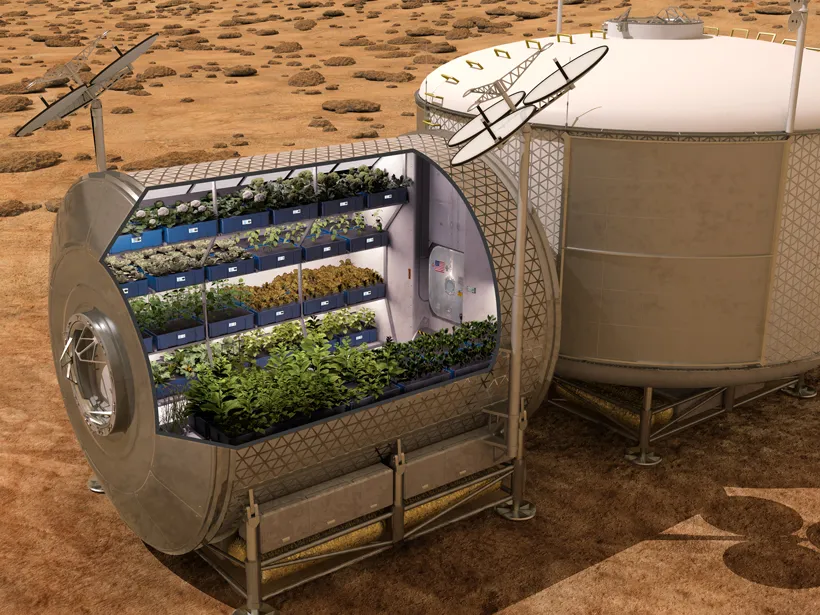



Article by: Hari Yellina
Twenty plants have been grown onboard space stations, including a dwarf wheat crop and vegetables, as researchers continue their search for crops that will help keep humans alive on Mars. Food is not readily available on Mars, where humans are scheduled to arrive by 2040, unlike water, oxygen, and fuel, which can all be created and recycled in space. Harvesting crops for resupply from Earth is simply not a possibility, because astronauts travelling to Mars would have to wait nine months for it to arrive, leaving them hungry. So, a slew of researchers, including Matthew Gilliham, Waite Research director at the University of Adelaide, and Jenny Mortimer, School of Agriculture, Food and Wine have joined the race.
According to professor Gilliham, there has been an unprecedented amount of energy focused on space, and maintaining human life on Mars has become something of a fixation for the sector. Working out how to carry everything but the kitchen sink to survive is not easy, but it is conceivable, according to professor Gilliham, because deep-space travel is high on the agenda. “As we get farther into space, Mars is 55 million kilometres away at its nearest point and is obviously unfeasible to deliver resources to,” stated professor Gilliham. Researchers are scared off not only by the prospect of a three-year round trip to transport food, but also by the amount of food necessary for an average crew of astronauts.
For a Mars mission, a staggering 10-tonnes of food would be required, and professor Gilliham is optimistic that it will be made up of more than simply dehydrated meals. Two technologies for growing food onboard a spacecraft have been successful thus far. Veggie, or Advanced Plant Habitation and Vegetable Production System, is a space garden aboard the International Space Station. Both systems have a tray of plants and are around a metre cube in volume. The APH, like Veggie, is a plant research growth chamber on station. To feed water, nutrients, and oxygen to the plant roots, it uses LED lights and a porous clay substrate with controlled release fertiliser.
However, unlike Veggie, it is contained and mechanised, with cameras and more than 180 sensors in continual interactive contact with a team on the ground in the United States, so the crew doesn’t have to worry about it on a daily basis. It has fully automated water recovery and distribution, as well as atmospheric content, moisture levels, and temperature. When a harvest is ready for research, the crew removes samples from the plants, freezes or chemically fixes them to preserve them, and sends them back to Earth for scientists to study so they may learn more about how space influenced their growth and development. Veggie gardens are normally the size of a carry-on piece of luggage and hold six plants.
Each plant is grown in a “cushion” that contains a clay-based growing medium as well as fertiliser. The cushions are necessary for maintaining a healthy balance of water, nutrients, and air around the roots. Professor Gilliham stated that while this was ideal for a food garnish as well as a psychological boost, more research was required. “Chilies were the most recent crop to be planted,” he continued, “but we can go beyond that.” “We need to figure out how to scale up from a metre cubed system to advanced production systems in order to build a self-sustaining spacecraft with a food supply,” says the researcher.
Plants also make people happy, according to associate professor Mortimer, who claims that researchers have discovered mental health and wellness benefits from growing crops while on cruises. “We depend on vegetation for several things on Earth, and we frequently take them for granted,” she remarked. “However, it is easy to think about the pleasure we derive from being surrounded by greenery, and how many people took up gardening during their solitude – it is essential to our physical and emotional well-being.” Despite the success of strawberries, carrots, radishes, and many other crops in space, determining the appropriateness of grains was tough. “We need to develop plants that can be used totally to reduce waste,” associate professor Mortimer stated.